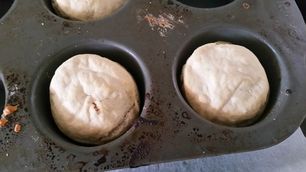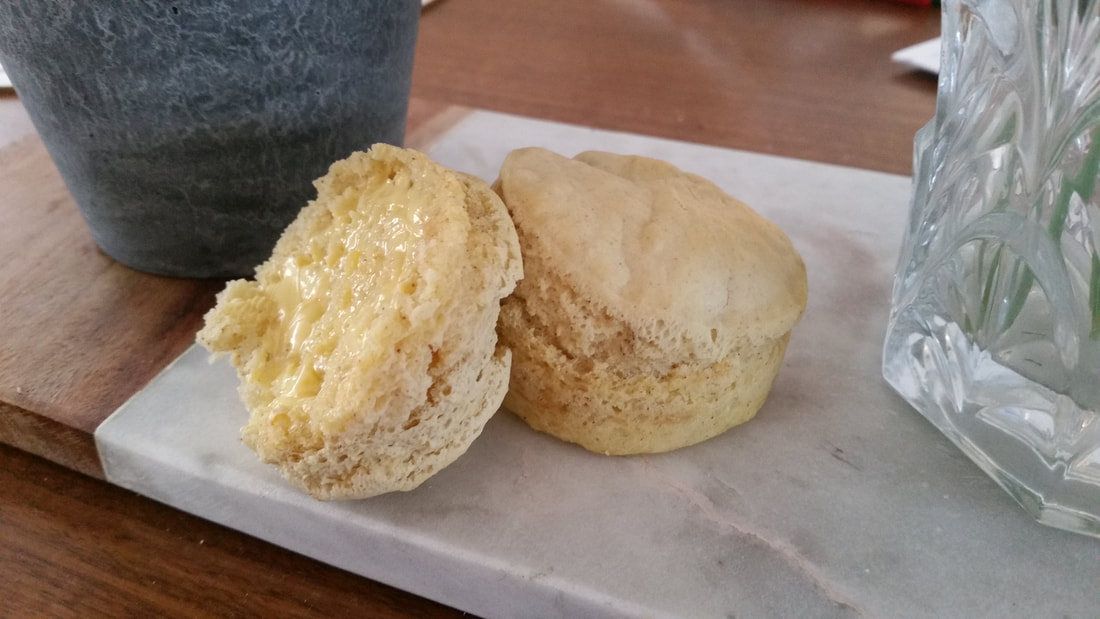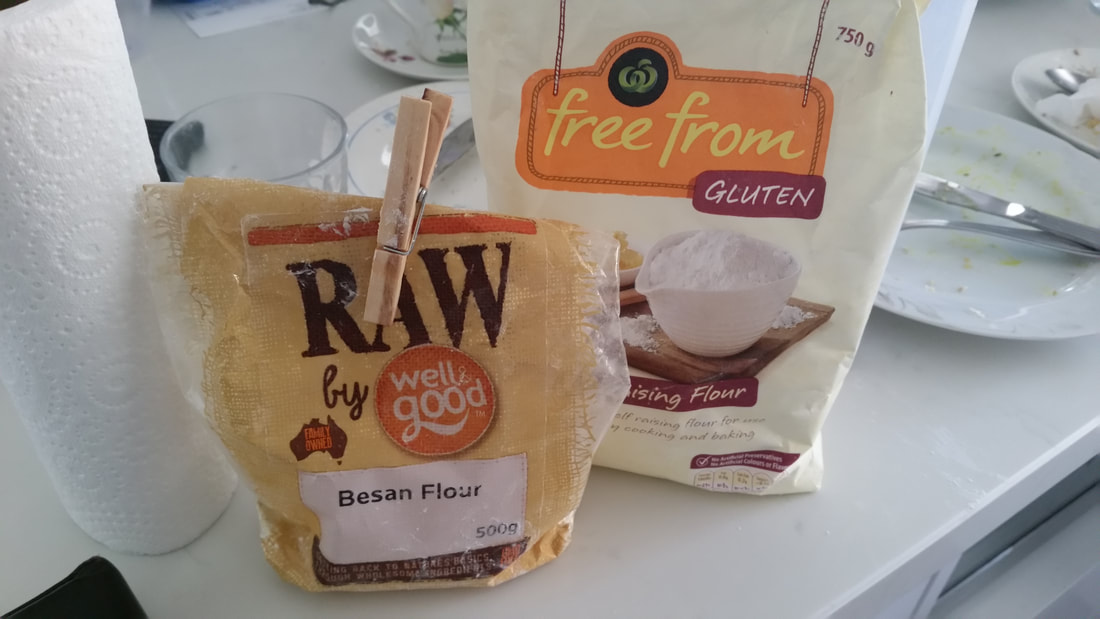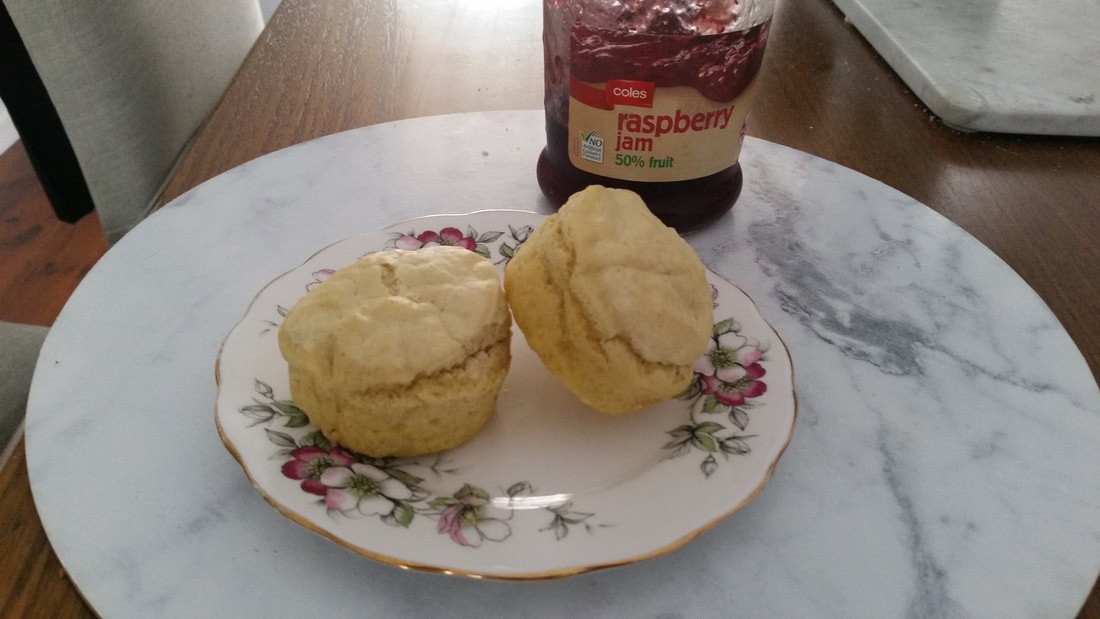|
For those of us who can no longer enjoy the scones our grandmother's baked because of Gluten intolerance or Ceoliac disease, I have created an alternative that, I think, is similar enough to satisfy a winter scones craving. But this post is also people who need a recipe for visiting friends and relatives who can't have the normal ones. You'll give them a lovely surprise. GF scones are a rarity and make a much nicer treat that the bought GF biscuts . Making them is a different process and the mix looks nothing like something you can kneed. I tried to make GF scones the traditional way, rubbing the butter into the self raising flour and then adding milk. When this failed I did the cheat and added an egg. I also tried the Country Women's Association mix of cream and lemonade mixed into self raising flour. Each attempt ended up with a squeaky, deathly-dry scone that failed to rise.  I decided to throw out the scone rule book and try something closer to a cake batter, but just a bit thicker. The flour combination above created the cheapest and best bodied version I've had to date. I used one cup of GF self raising flour to a half cup of besan flour which comes from chickpeas. I feel the besan adds much needed protein to the mix. I add one and a half teaspoons of GF baking powder to the dry ingredients and give a good mix with a fork. All that is left to add is an egg, a desert spoon of olive oil and enough water to make a stiff batter. It shouldn't run off the spoon but mound when scooped up. leave to rest for a minute or two and then stir lightly break up big bubbles. Spoon into a greased silicone muffin pan so that about one and a half to two centimeters (half an inch) of mix fill the bottom of each cup. There should be enough mix for about six scones. Put in a preheated 200C oven for a couple of minutes then turn down to 180C and cook for another ten minutes or until the tops are starting to brown. Remove from the oven and let sit for a minute before turning out carefully. They are fragile when very hot. leave to cool down to luke warm and then they will have obtained the texture enabling them to be cut like a normal scone. They are best eaten on the day they are made but they can be stored in the fridge. However, they shouldn't be served cold. They will be tough and crumbly. Warmed for five minutes in a 180C oven should be perfect. I didn't have any cream in the fridge to make the next picture into what we in Australia call a Devonshire tea. This is, warm scones, split and topped with jam and whipped cream and served with a cup of tea. When in the UK I was served a version of this called cream tea, the same except the scones had dried fruit in them. I guess you could add some raisins, currents and spice to this mix for a UK type scone. If you have a blog, Youtube channel, or Instagram account with GF recipes, It would be great if you could post the links in the comments below so we can all visit.
|
Romance author and lifestyle bloggerMy whole life is inspired by romance. I write romance novels of course but also love creating DIY's and decorating in a romantic style. I'm rejuvenating an old garden, including rescuing a couple of old rose bushes and planting new ones. Archives
March 2021
Categories
All
|




 RSS Feed
RSS Feed
